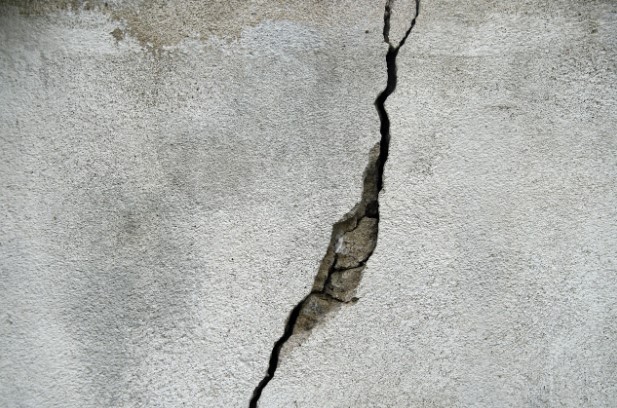Concrete is a durable and versatile material widely used in construction, but it’s not without its challenges. Over time, various issues can arise that affect the integrity and appearance of concrete surfaces. Understanding these common problems and knowing how to address them is crucial for maintaining the longevity of concrete structures. In this blog post, we’ll explore some of the most common concrete-related issues and provide effective solutions to fix them.

The Importance of Hiring Professionals
When it comes to addressing concrete-related problems, hiring professionals is crucial for ensuring the job is done correctly and safely. Concrete repair and maintenance require specialized knowledge, tools, and techniques that only experienced professionals possess. Attempting DIY repairs can often lead to further damage, higher costs, and compromised structural integrity. Professionals can accurately diagnose the underlying issues, whether it’s cracking, spalling, or settlement, and implement the most effective solutions, experts from PolyLevelAlberta explain. They also ensure that repairs comply with local building codes and industry standards, providing peace of mind. By hiring experts, you invest in the long-term durability of your concrete structures, preventing future problems and saving time and money in the process.
Cracking: Causes and Solutions
Cracking is one of the most prevalent issues in concrete. While minor cracks might be purely cosmetic, larger cracks can compromise the structural integrity of the concrete. Cracks often occur due to shrinkage as the concrete cures, thermal expansion and contraction, or excessive loads. Additionally, poor workmanship, improper curing, and a lack of control joints can contribute to cracking.
To fix cracks, the first step is to identify their cause. For small cracks, a simple filler or sealant may suffice. For larger or more severe cracks, it’s crucial to use an epoxy injection or polyurethane foam to fill the cracks and restore the concrete’s strength. Installing control joints during the initial construction phase can also help prevent future cracking by allowing for controlled expansion and contraction.
Spalling: Understanding Surface Deterioration
Spalling is the term used to describe the chipping or flaking of the concrete surface. This issue is often caused by freeze-thaw cycles, where moisture enters the concrete, freezes, and then expands, causing the surface to break apart. Deicing salts, poor finishing techniques, and inadequate curing can also lead to spalling.
To address spalling, the damaged area must be cleaned thoroughly to remove any loose material. Next, a concrete resurfacer or patching compound can be applied to restore the surface. In cases of severe spalling, a more extensive repair involving the removal and replacement of the affected section may be necessary. To prevent spalling, it’s important to apply a sealer to protect the concrete from moisture and use proper finishing and curing techniques during installation.
Scaling: Causes and Prevention
Scaling is similar to spalling but typically refers to the peeling away of thin layers of the concrete surface. This issue is commonly caused by exposure to freeze-thaw cycles, chemical deicers, and improper finishing techniques. Scaling not only affects the appearance of the concrete but can also expose the underlying aggregate, leading to further deterioration.
To fix scaling, the affected surface should be cleaned and prepped for repair. A thin overlay or resurfacing material can then be applied to restore the appearance and protect the underlying concrete. Prevention of scaling involves using air-entrained concrete, which helps resist freeze-thaw damage, and avoiding the use of harsh chemical deicers.
Discoloration: Causes and Solutions
Discoloration in concrete can be an aesthetic concern, often resulting from inconsistent mixing, uneven curing, or the use of different batches of materials. Other factors, such as water migration, chemical reactions, and exposure to environmental elements, can also lead to discoloration.
To address discoloration, surface cleaning is often the first step, as stains from oil, dirt, or other contaminants can sometimes be removed with a power washer or specialized cleaner. If the discoloration is deeper, options include using a concrete stain or dye to create a uniform appearance. In severe cases, resurfacing or applying a decorative coating may be necessary to achieve the desired look. Preventing discoloration involves consistent mixing practices, proper curing, and using materials from the same batch whenever possible.
Efflorescence: Removing White Deposits
Efflorescence is a common issue where a white, powdery substance appears on the surface of concrete. This occurs when water containing dissolved salts migrates to the surface and evaporates, leaving the salts behind. Efflorescence can detract from the appearance of concrete surfaces, especially on decorative or colored concrete.
To remove efflorescence, the affected area can be cleaned with a stiff brush and water. For more stubborn deposits, a diluted acid solution, such as muriatic acid, may be required. It’s important to neutralize the acid afterward with a baking soda solution to prevent further damage. To prevent efflorescence, ensure that the concrete is sealed properly to reduce water penetration, and consider using low-alkali cement in the mix.

Concrete issues can arise from various factors, including environmental conditions, poor construction practices, and improper maintenance. However, most of these problems can be fixed or prevented with the right approach. Regular inspections, proper installation techniques, and timely repairs are key to extending the lifespan of concrete structures.
By understanding the common issues that affect concrete and knowing how to address them, you can maintain the durability and appearance of your concrete surfaces for years to come. Whether it’s a minor crack or a significant settlement problem, addressing these issues promptly will save time, money, and headaches in the long run.






